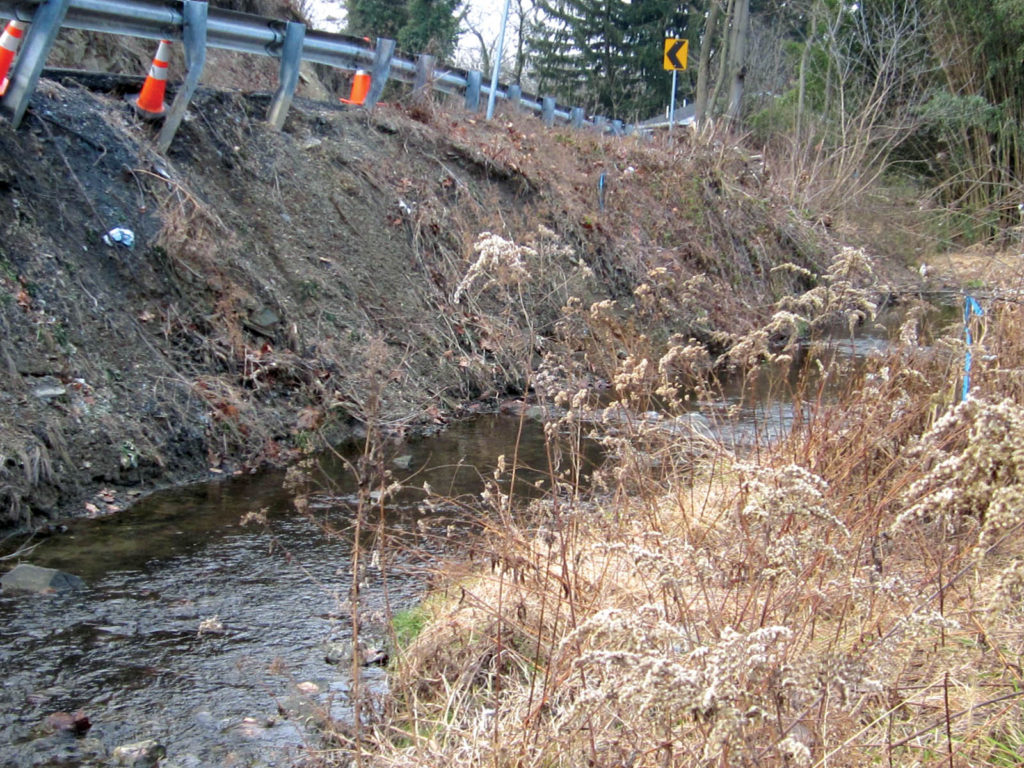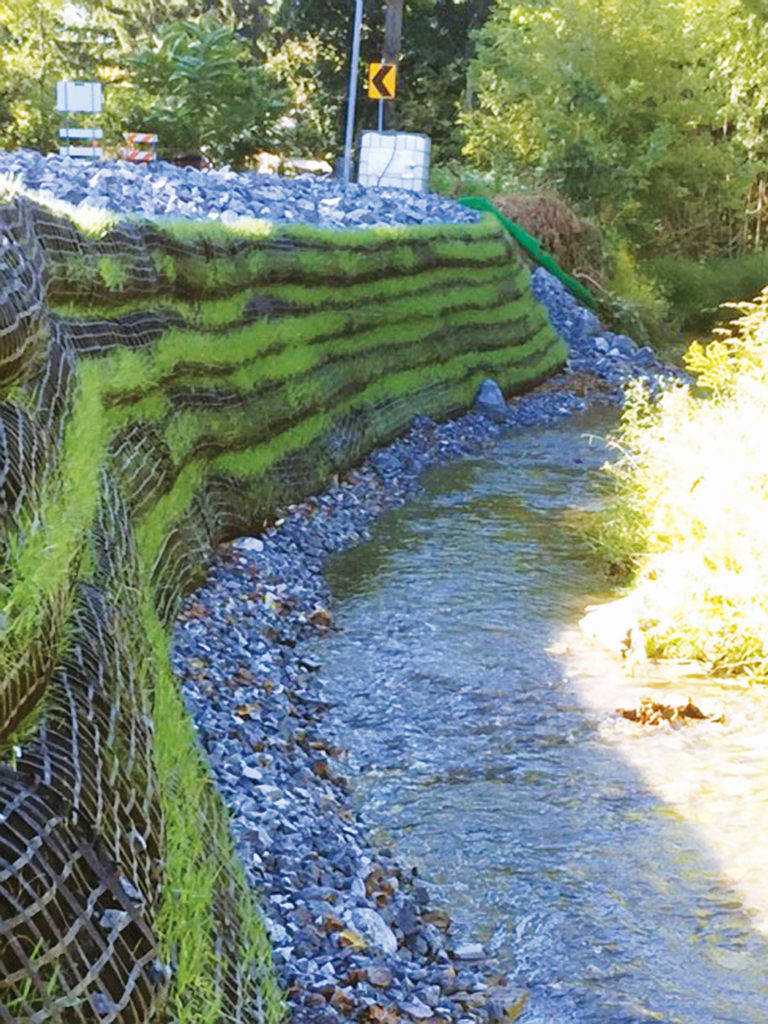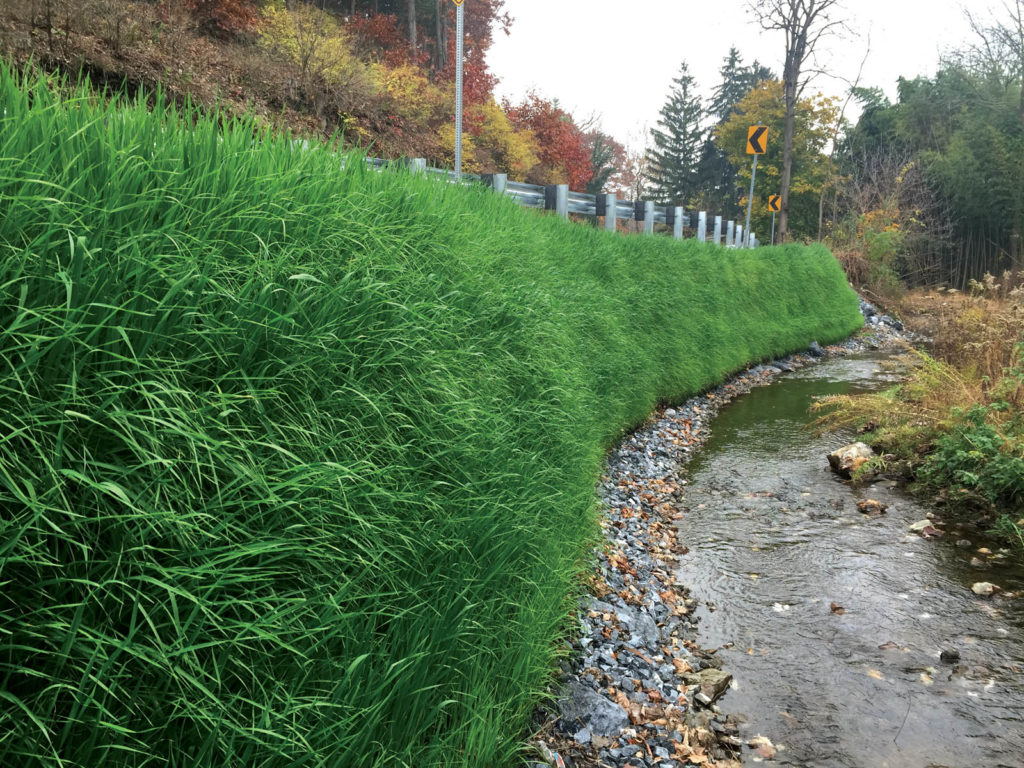
Mechanically stabilized earth (MSE) walls are becoming more common in today’s landscape. Keeping soil in place during construction (erosion control), addressing stormwater contaminated with sediment-laden runoff during construction (sediment control), and providing successful revegetation after construction activities are all challenges that are commonly solved by members of the Erosion Control Technology Council (ECTC). ECTC is a leading industry organization home to top manufacturers of erosion and sediment control products, component suppliers, material distributors and test laboratories. ECTC members are dedicated to advancing the knowledge, experience and expertise of erosion and sediment control. The nonprofit organization’s mission is to develop performance standards, uniform testing procedures, and guidance on the application and installation of hydraulic erosion control products (HECPs), rolled erosion control products (RECPs), and sediment retention fiber rolls (SRFRs). ECTC recently expanded its reach to other technologies as well, and the organization promotes the use of erosion and sediment control products through industry leadership and education in the hope of making a substantial contribution to the science of erosion control and environmental preservation.

ECTC’s expertise is called upon for all phases—the before, during and after—of most MSE wall construction projects. MSE walls traditionally have been a combination of materials that provide a stabilized slope with a form of hard armor facing. These facings have evolved through the years, and even though they are hard armor, they can be quite beautiful after artistic touches are applied to their public-facing surface. However, a trend of MSE walls in some areas is to incorporate a vegetated facing. These “green” MSE walls provide both a softer look and all the benefits of vegetated solutions such as water filtration (removal of nutrients, heavy metals, etc.), pollinator corridors, and cooler temperature runoff to adjacent water bodies.
Vegetated MSE walls are commonly built with SRFRs or other bag-like materials that are filled with compost or engineered soil mixes. The SRFRs or bags are wrapped in geogrid material that contains sufficient opening sizes to accommodate planting of live stakes and/or plugs without the need to cut the material. It is important to start the bottom row with a stable foundation, so SRFRs or bags filled with compacted gravel or rock are common for the first layer. Each successive layer is stacked upon the previous, then wrapped with geogrid and tied back into the compacted fill behind the face of the wall.
Additional SRFRs may be needed around the MSE wall during construction for sediment control purposes. Providing proper erosion control across the top of all MSE walls back to the existing slope is very important. Also, any other adjacent slopes that may be disturbed during construction require erosion control solutions to protect them. Erosion control blankets (ECBs) are RECPs that are designed to degrade over time, and they are commonly used on the cap. In addition, turf reinforcement mats (TRMs) are RECPs designed not to degrade, and TRMs are used to provide reinforced vegetation on the cap in some designs. HECPs can be used to provide seed mixes to the face of the MSE wall, if more than live stakes and plugs are part of the final vegetation plan. Proper drainage behind all MSE walls is a significant consideration among other factors, so site-specific engineering is required by a qualified professional for all MSE walls regardless of the facing.

ECTC members recognize that green, vegetated solutions are being requested more frequently on today’s projects. Thus, ECTC members continue to innovate solutions to soften up MSE walls so all the benefits of vegetation can be realized, while also providing the required engineered stabilization of the site. Synergistic approaches that utilize HECPs, RECPs, SRFRs and other erosion and sediment control products have proven successful on vegetated MSE walls in the past and will continue to help solve their challenges into the future, while providing a stabilized, vegetated option. Contact ECTC to learn more about vegetated MSE walls. In addition, there is a complete toolbox of specifications, CAD files, installation videos, fact sheets, and more online at ECTC.org.
Please contact Jon Curry (jcurry@ectc.org), ECTC executive director, with any questions or comments regarding this article. He will be sure to communicate your questions or comments to ECTC membership, then provide a timely response.
 TEXTILES.ORG
TEXTILES.ORG


